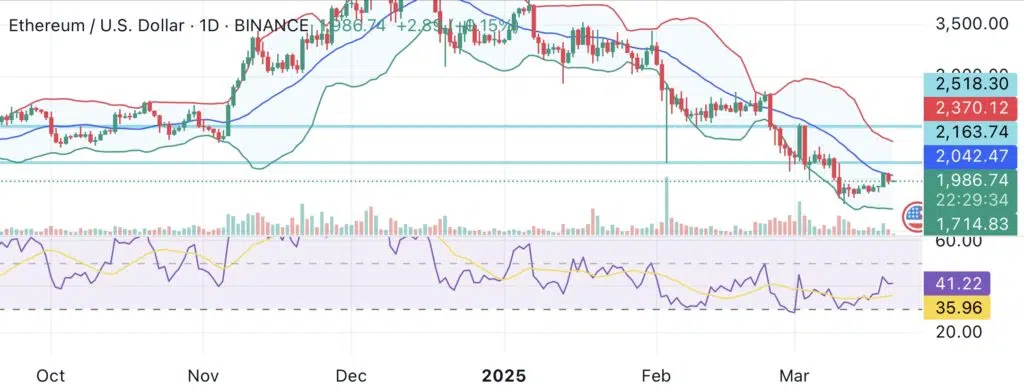3 min read
TAKE A BREAK
Ethereum Exchange Supply Hits 10-Year Low — Will ETH Prices Bounce Back?
Updated: 3/21/2025
Shrinking Exchange Supply
Why ETH Availability Is Dropping Fast
According to Santiment’s analysis, Ethereum’s exchange supply has plunged 16.4% in the past seven weeks. This trend indicates long-term accumulation, as investors prefer staking ETH or participating in DeFi protocols instead of trading on exchanges.
However, the lack of sell pressure has not been enough to drive up prices. Instead, Ethereum’s mainnet activity and revenue have seen notable declines, suggesting deeper systemic challenges despite reduced supply.
On-Chain Activity Signals Trouble
Decreasing Volumes and Revenue Post-Dencun Upgrade
The Dencun upgrade significantly reduced Ethereum gas fees by 95%, yet this has not led to greater usage or increased revenue. Monthly DEX volume on Ethereum dropped from $92 billion in December to $82 billion in February. Fee revenue plummeted from $218 million to just $46 million in the same period.
Layer-2 networks such as Arbitrum and Base are drawing away users, with $5.67 billion in DEX volume in just one week, out of Ethereum’s $9.8 billion total. This shift weakens Ethereum’s position as the primary settlement layer in the crypto ecosystem.
Technical and Institutional Headwinds
Weak Momentum and ETF Hesitation Add Pressure
Ethereum’s technical indicators are currently bearish. The RSI is at 41.22, suggesting recovery from oversold conditions, but lacking strong momentum. Price is also struggling to break through the 50-day moving average at $2,042, while volatility remains low.
Institutional interest remains tepid. Ethereum spot ETFs saw $370 million in outflows last month. Although the NYSE and CBOE have submitted requests to allow staking in ETH ETFs, the SEC has not yet approved these changes, limiting broader adoption potential.
Key Price Levels to Watch
Short-Term Resistance and Support Markers
- Resistance at $2,042
- Upside targets: $2,163 and $2,370
- Support at $1,986
- Key fallback zone: $1,714
A break above $2,042 could spark short-term bullish momentum, but failure to hold $1,986 might see ETH testing support closer to $1,700.
Ethereum Ecosystem Snapshot

Current Stats and Trends
- Total Value Locked (TVL): $46B, down from $76B in December
- ETH on exchanges: 8.97M (10-year low)
- Monthly fee revenue: $46M in February
- Layer-2 dominance increasing